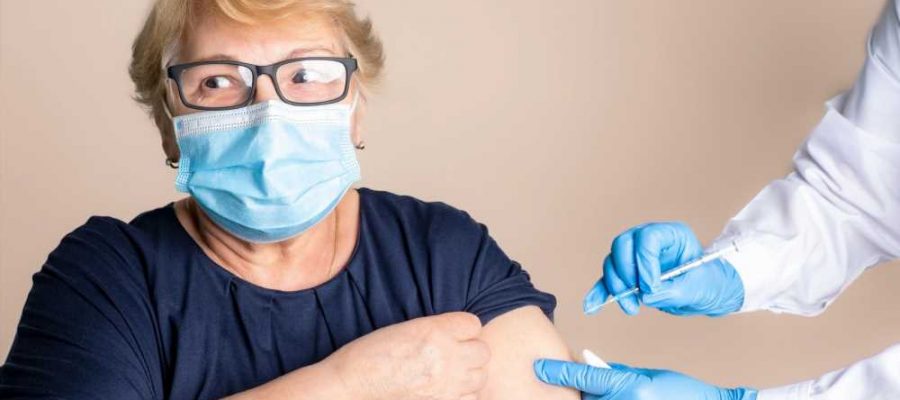In a recent study posted to the medRxiv* preprint server, researchers in Canada assessed the effectiveness of protection elicited by the fourth dose of the coronavirus disease 2019 (COVID-19) mRNA vaccine.
Long-term care (LTC) residents vaccinated with their third COVID-19 vaccine dose at least three months prior were eligible to receive the fourth dose from December 30, 2021, in Ontario, Canada. The most popular supplement as the fourth dose was 100 micrograms (mcg) of messenger ribonucleic acid (mRNA)-1273. A fourth dose received seven days ago increased protection against severe acute respiratory syndrome coronavirus 2 (SARS-CoV-2) Omicron infection, symptomatic infection, and severe outcomes, according to past studies that compared vaccine effectiveness (VE) in unvaccinated individuals and the marginal effectiveness associated with fourth and the third vaccine doses.
 Study: Effectiveness and Duration of Protection of a Fourth Dose of COVID-19 mRNA Vaccine among Long-Term Care Residents in Ontario, Canada. Image Credit: Oxanaso / Shutterstock
Study: Effectiveness and Duration of Protection of a Fourth Dose of COVID-19 mRNA Vaccine among Long-Term Care Residents in Ontario, Canada. Image Credit: Oxanaso / Shutterstock
About the study
In the present study, researchers determined the marginal vaccine effectiveness of the fourth COVID-19 vaccine dose compared to the third dose in LTC residents.
The team used laboratory, vaccine, reportable disease, and health administrative data from December 30, 2021, to August 3, 2022, to perform a test-negative study among LTC residents older than 60 as of December 30, 2021. The SARS-CoV-2 Omicron variant was the predominant variant of concern (VOC) throughout the analysis. Therefore, until Delta (B.1.617.2) was determined by either whole genome sequencing or spike (S)-gene target failure, patients were assumed to be Omicron-infected.
The team evaluated VE corresponding to individuals vaccinated with two, three, and four vaccine doses and those who were unvaccinated. Additionally, marginal efficacy related to four doses versus three doses administered three months prior and outcome severity concerning hospitalization or mortality entirely or partially due to COVID-19 was estimated. Samples of cases and controls were collected by the week before the test. In cases where there were numerous infections, the primary infection was chosen. For controls, the first negative test within the preceding week was chosen. If controls test negative in earlier weeks but positive later in the research period, they may be deemed cases later.
Using logistic regression, the team compared the odds of vaccination in cases with those in test-negative controls while adjusting for age, sex, region of residence, week of the test, and previous SARS-CoV-2 test >90 days prior. A generalized estimating equations framework with an exchangeable correlation structure was employed to account for clustering at the facility level. VE and marginal effects were calculated using the formula 1-adjusted odds ratio.
Results
Almost 92% of Ontario LTC residents underwent SARS-CoV-2 testing at least once throughout the study period. At the time of testing, 46.3% of cases and 48.7% of controls had received the fourth vaccine dose. Compared to patients who had a third vaccination 84 days prior, fewer residents who received their fourth dose resided in a hospital with an active outbreak. Furthermore, 57% and 95% of individuals vaccinated with a minimum of three and four vaccine doses have received mRNA-1273.
The marginal effectiveness of a fourth dose administered 84 days prior against infection was 23%, symptomatic infection was 36%, and severe outcomes were 37% when compared to patients who had received the third dose. With minimal further protection against infection as well as symptomatic infection by approximately 112 to 139 days and against severe outcomes by 168 days, marginal effectiveness dropped with time after the fourth dosage. VE increased among vaccinated individuals following each subsequent dose but decreased as time passed since vaccination.
With VE against infection at 49%, symptomatic infection at 69%, and severe outcomes at 82%, VE peaked at less than 84 days after the fourth dosage. VE dropped to 18% against infection, with 44% against symptomatic infection, and 74% against severe outcomes at around 168 days after the fourth vaccination.
Overall, the study findings showed that the efficacy of fourth doses of mRNA COVID-19 vaccines against SARS-CoV-2 Omicron infection outcomes in LTC people in Ontario decreased over time and peaked immediately after receiving the fourth dose.
*Important Notice
medRxiv publishes preliminary scientific reports that are not peer-reviewed and, therefore, should not be regarded as conclusive, guide clinical practice/health-related behavior, or treated as established information.
- Effectiveness and Duration of Protection of a Fourth Dose of COVID-19 mRNA Vaccine among Long-Term Care Residents in Ontario, Canada, Ramandip Grewal, Lena Nguyen, Sarah A Buchan, Sarah E Wilson, Andrew P Costa, Jeffrey C Kwong, medRxiv 2022.09.29.22280526, DOI: https://doi.org/10.1101/2022.09.29.22280526, https://www.medrxiv.org/content/10.1101/2022.09.29.22280526v1
Posted in: Men's Health News | Medical Research News | Women's Health News | Disease/Infection News | Healthcare News | Pharmaceutical News
Tags: Coronavirus, Coronavirus Disease COVID-19, covid-19, Efficacy, Gene, Genome, Hospital, Laboratory, Mortality, Nursing, Omicron, Research, Respiratory, Ribonucleic Acid, SARS, SARS-CoV-2, Severe Acute Respiratory, Severe Acute Respiratory Syndrome, Syndrome, Vaccine, Whole Genome Sequencing

Written by
Bhavana Kunkalikar
Bhavana Kunkalikar is a medical writer based in Goa, India. Her academic background is in Pharmaceutical sciences and she holds a Bachelor's degree in Pharmacy. Her educational background allowed her to foster an interest in anatomical and physiological sciences. Her college project work based on ‘The manifestations and causes of sickle cell anemia’ formed the stepping stone to a life-long fascination with human pathophysiology.
Source: Read Full Article
